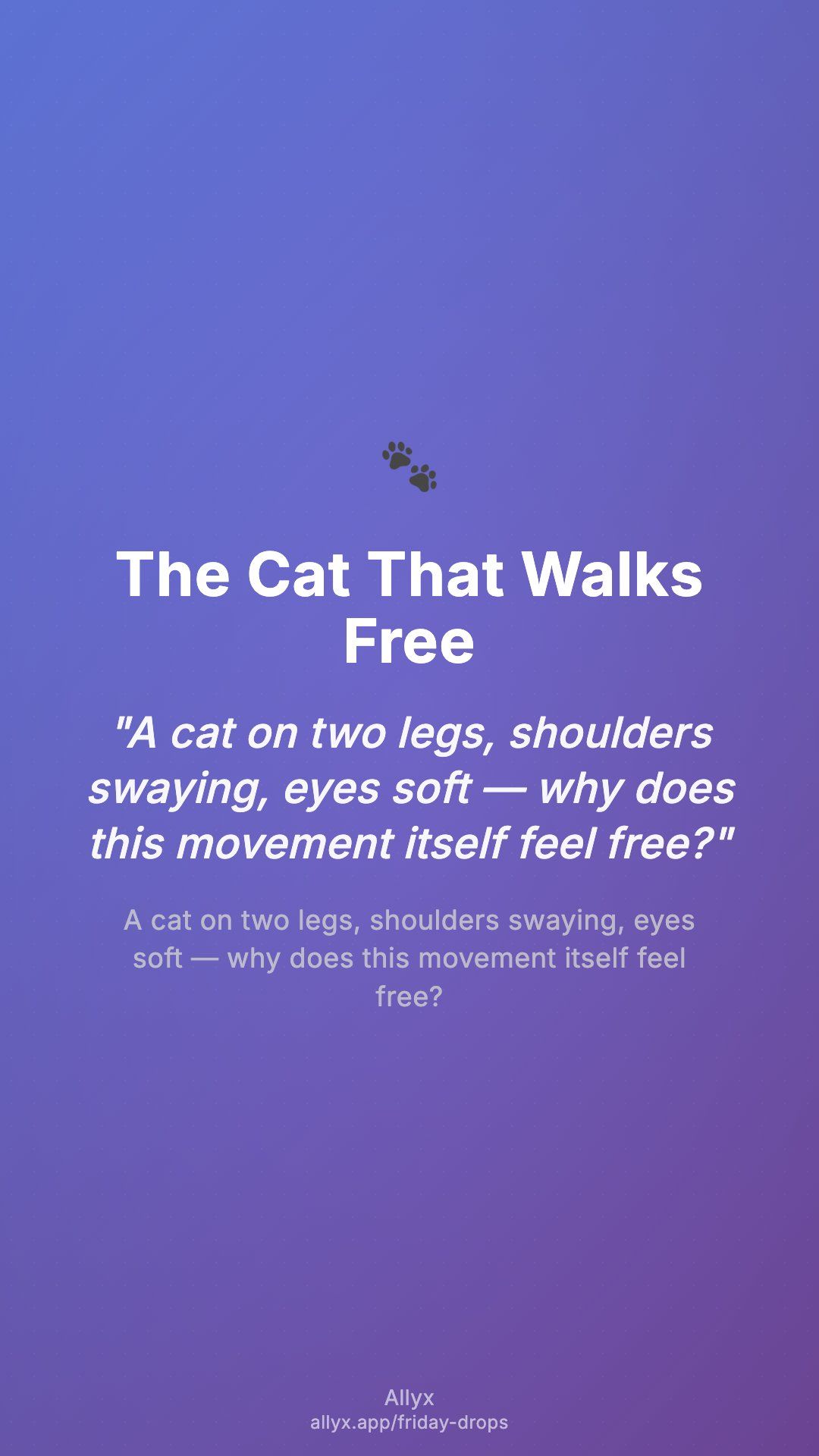The Cat That Walks Free
A cat on two legs, shoulders swaying, eyes soft — why does this movement itself feel free?
Wednesday, August 27, 2025
Metaphorical Narrative
Picture a cat that rises on two legs. It strolls forward with an easy swing in the shoulders, a loose rhythm in its gait, and an unassuming gaze that doesn’t demand anything from the world. No posture of performance, no tension of control. Just a body following its own rhythm, unconcerned with judgment.
It looks almost absurd — yet watching it you feel something open. The cat is free not because of what it does, but because of what it doesn’t carry: no stiffness, no image to defend, no hidden contracts to obey.
Core Insight
Freedom in movement is the absence of excess constraint. Most of us walk carrying invisible contracts — shoulders held to project strength, pace measured to appear purposeful, eyes fixed to signal confidence. Each contract is a subtle performance.
The dance-walk cat breaks every rule. Its body sways because it isn’t braced against imagined critics. Its steps land without rehearsed timing. Its eyes wander without the burden of being “watched.” The freedom is not in the act of walking but in refusing to obey those contracts.
Part Two: Expansion Phase
Not every body is “cat ready” yet. Years of hidden contracts can leave muscles braced, breath shallow, posture armored. When you try to walk loose, the body may feel stiff or unnatural — not because freedom is impossible, but because the body is still expanding.
Expansion itself is the process of freedom. Each loosened shoulder, each deeper breath, each bit of sway returned is a clause ripped out of the old contract. The body does not need to rush. Freedom is not a sudden switch; it is a steady reclaiming of movement that belongs to you.
Saturday Experiment
Today, try a “cat walk of freedom”:
- Walk for a few minutes without fixing your posture, speed, or gaze. Let the shoulders swing naturally.
- Notice how often your mind tries to correct the walk into “normal” or “acceptable.”
- Keep loosening, keep walking. See what it feels like to move with no hidden audience.
If the body feels tight, don’t fight it. Let expansion come slowly. Even a fraction of looseness is a victory.
Sunday Reflection
- How often does the third-person observer in them judge how “normal” they look?
- What invisible contracts does their body usually obey in public movement?
- Where did they feel the body naturally expanding when they gave permission to move without performance?

